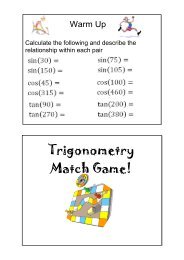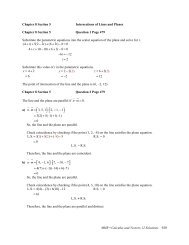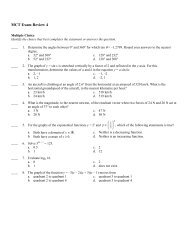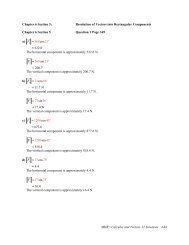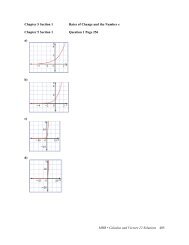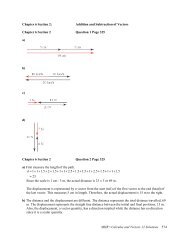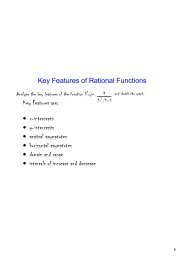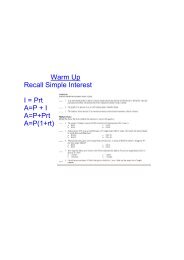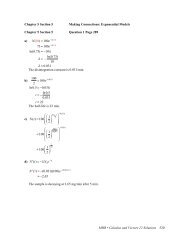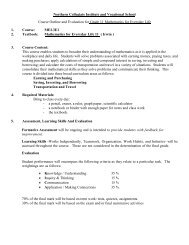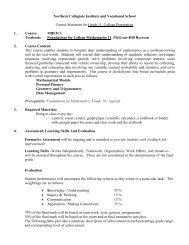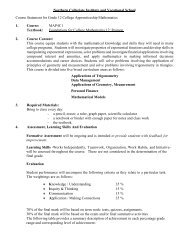MHR • Advanced Functions 12 Solutions 660
MHR • Advanced Functions 12 Solutions 660
MHR • Advanced Functions 12 Solutions 660
You also want an ePaper? Increase the reach of your titles
YUMPU automatically turns print PDFs into web optimized ePapers that Google loves.
Chapter 7 Section 5 Question 3 Page 404<br />
a) i) P = 1006(1.016) t<br />
P = 1006(1.016) 100<br />
&= 4920<br />
The town’s population will be approximately 4920 in 100 years from 1920.<br />
P = 1000 ! 2<br />
t<br />
43.5<br />
100<br />
P = 1000 ! 2<br />
43.5<br />
&= 4921<br />
The town’s population will be approximately 4921 in 100 years from 1920.<br />
ii)<br />
P = 1006(1.016) t<br />
20 000 = 1006(1.016) t<br />
20 000<br />
1006 = 1.016t<br />
! 20 000$<br />
log<br />
"<br />
# 1006 %<br />
& = t log1.016<br />
! 20 000$<br />
log<br />
"<br />
# 1006 %<br />
&<br />
t =<br />
log1.016<br />
t &= 188.4<br />
It will take approximately 188.4 years for the town’s population to reach 20 000.<br />
P = 1000 ! 2<br />
20 000 = 1000 ! 2<br />
20 = 2<br />
t<br />
43.5<br />
log 20 = log 2<br />
t<br />
43.5<br />
t<br />
43.5<br />
t<br />
43.5<br />
log 20 =<br />
t<br />
43.5 log 2<br />
t log 20<br />
=<br />
43.5 log 2<br />
t =<br />
43.5log 20<br />
log 2<br />
t &= 188<br />
It will take approximately 188 years for the town’s population to reach 20 000.<br />
b) Answers may vary. A sample solution is shown.<br />
Quite close. The differences are due to rounding in each method.<br />
<strong>MHR</strong> <strong>•</strong> <strong>Advanced</strong> <strong>Functions</strong> <strong>12</strong> <strong>Solutions</strong> 722



